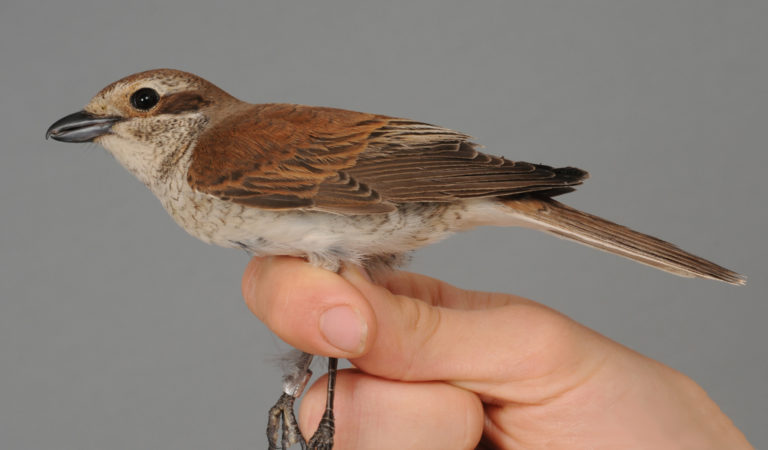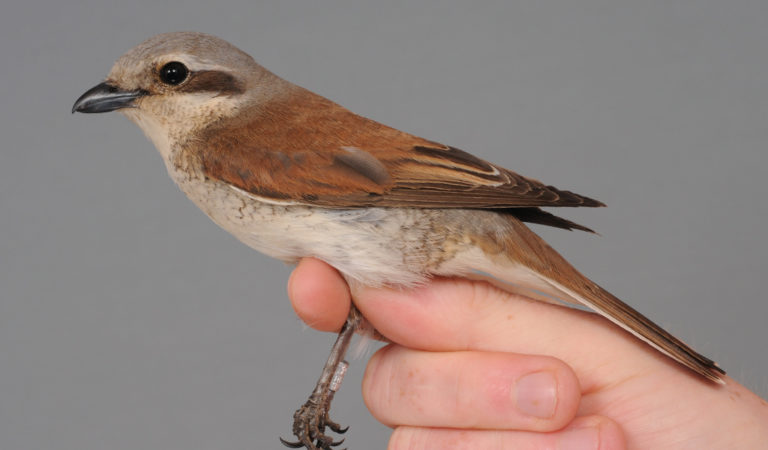

Red-backed shrike
SEXING:
Usually unproblematic in adult birds (from 2cy spring and onwards), but note the existence of females showing male-reminiscent plumage patterns. 1cy are usually impossible to sex, but note the exeptions below.
1cy: Most birds are not possible to sex. However, according to preliminary genetic studies here at Ottenby (Stervander & Hellström, in prep.) birds showing juvenile TT with no, or very weak, dark subterminal pattern are males, with few exceptions. However, the usefulness of this character is rather low since most juvenile males shows a more coarse pattern, inseperable from females. Further, there are (exceptionally) birds seen with a pattern of the juvenile RR reminiscent of adult male (large white portions in the feather bases). See photo below. It seems very reasonable to assume such individuals are always males.
2cy+: Easily sexed due to the black and white tail, pure pale grey crown, distinct black facial mask and lack of dark barring in breast/flank/ in the male. Note however that a few (possibly senior?) females may develop a more contrasting plumage that in some respects may approach males, at times even including some whitish portions in the tail. However, such individuals are still reckognized by their less distinct and less pure coloration and precense of some barring in flanks and sides of breast.

Female (2cy+) May. A rather typical female lacking the characteristic pattern of the male and showing coarse barring to flank and breast. A few adult females may also show dark barring in the mantle. [3218344]

Female (2cy+) May, showing a slightly more contrasting plumage. A few females are more male-like with greyer crown, darker facial mask and rarely also with white portions in the tail, but they are always less contrasting than males and show (at least) traces of barring to the flanks and sides of breast. [3218349]
More Lanius collurio:
Ageing autumn
Ageing spring
Moult
Ringers’ DigiGuide is sponsored by:
Hemsidan producerad i samarbete med
BirdLife Sverige